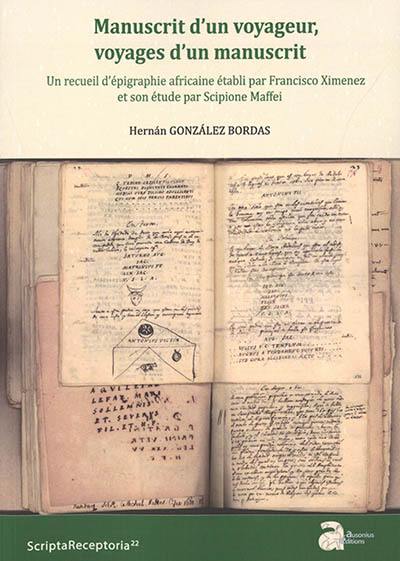
Collection(s) : Scripta receptoria
Paru le 15/03/2022 | Broché 203 pages
Professionnels
Manuscrit d'un voyageur, voyages d'un manuscrit
Ce livre s'occupe d'un manuscrit inédit du XVIIIe siècle récemment découvert à Nîmes, rédigé en castillan et contenant un recueil d'inscriptions latines de l'Afrique proconsulaire. Son étude nous plonge dans l'histoire de l'épigraphie et de la réception de l'Antiquité, tout comme dans celle des voyages et de la transmission des connaissances. Parallèlement, des informations à propos de nombreuses inscriptions reproduites dans le recueil, jusqu'ici inédites, permettent de se pencher sur l'histoire ancienne du Maghreb. L'auteur, Francisco Ximenez de Santa Cathalina, séjourna à Tunis entre 1720 et 1735 avec pour mission de s'occuper des chrétiens réduits en esclavage et fut loué par Theodor Mommsen pour ses capacités d'épigraphiste. Le recueil étudié est le fruit d'une riche période d'explorations durant lesquelles F. Ximenez fut ébloui par les antiquités de sites majeurs, notamment Thugga, Sufetula ou le Temple des Eaux près de Zaghouan. Il fut expédié à Vérone pour enrichir le corpus absolutissimum d'inscriptions latines que Scipione Maffei ne put terminer. Ensuite, ses folios, désordonnés, finirent à Nîmes, parmi les liasses léguées à Jean-François Séguier.
Le premier chapitre de cette monographie replace F. Ximenez dans son contexte historique et intellectuel tout en retraçant le parcours de ses excursions. Dans le deuxième, un nouvel ordre des folios est proposé, en cherchant à rétablir la forme originale du recueil qui est transcrit et traduit au français dans le troisième chapitre. Le quatrième, en suivant les sites par ordre alphabétique, rend compte des inscriptions du recueil en comparant les descriptions et les variations de lectures avec celles d'ouvrages contemporains. On y analyse également le travail mené par S. Maffei sur le manuscrit. Le cinquième s'attarde sur ce savant italien, son grand projet épigraphique, ainsi que sur les possibles connexions entre lui et F. Ximenez. En même temps, on observe de près la réception des antiquités africaines en Europe et on redonne à F. Ximenez sa place dans l'antiquarisme du XVIIIe siècle.
This book deals with an unpublished manuscript, dating back to the 18th century, recently discovered in Nimes. Written in Spanish, it mainly contains inscriptions from Africa Proconsularis. This collection of inscriptions plunges us into the history of epigraphy and the reception of Antiquity, as well as that of travels, and transmission of knowledge. Containing hitherto unpublished information on numerous inscriptions, the manuscript also provides an opportunity to examine the ancient history of the Maghreb. Its author, Francisco Ximenez de Santa Cathalina, stayed in Tunis between 1720 and 1735 with the mission of taking care of the enslaved Christians and was praised by Theodor Mommsen for his abilities as an epigraphist. The collection studied here is the result of a rich period of exploration during which F. Ximenez was dazzled by the antiquities of major sites, in particular Thugga, SufetuLa and the Water Temple near Zaghouan. It was sent to Verona to enrich the corpus absolutissimum of Latin inscriptions that Scipione Maffei could not complete. Afterwards, its disordered folios ended up in Nimes, among the bundles of documents bequeathed to Jean-François Séguier.
The first chapter of this monograph places F. Ximenez in his historical and intellectual context and traces the itinerary of his excursions. The second proposes a new order of the folios in order to restore the collection to its original form, while the third chapter contains its transcription and translation into French. The fourth chapter, following the sites in alphabetical order, reports the inscriptions of the manuscript and compares the descriptions and reading variations with those of contemporary works. S. Maffei's work on the manuscript is also analysed here. The fifth chapter focuses on this Italian scholar, his ambitious epigraphic project, as well as the possible connections between him and F. Ximenez. At the same time, the reception of African antiquities in Europe is closely observed, giving back to F. Ximenez his place in the antiquarianism of the 18th century.